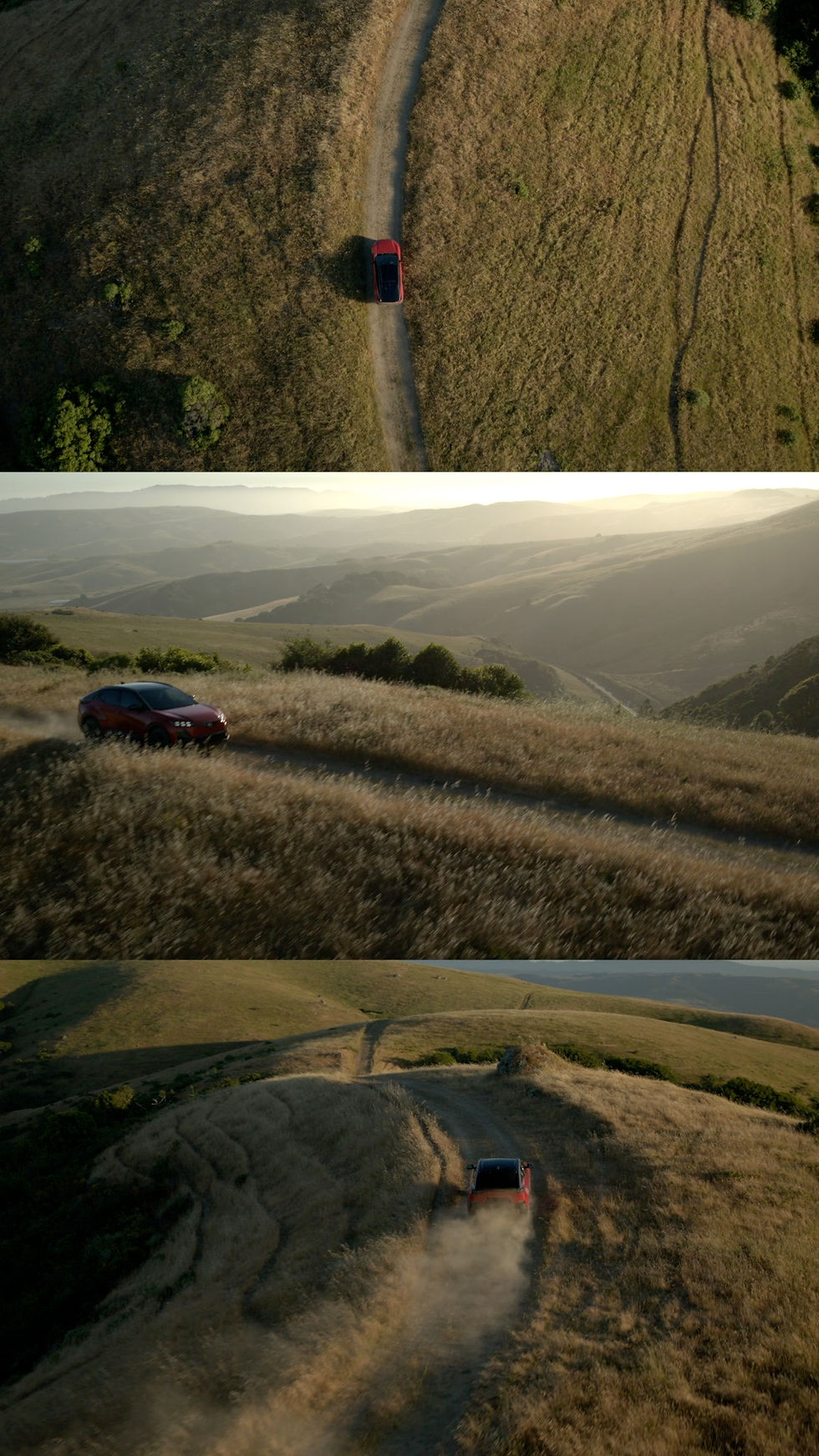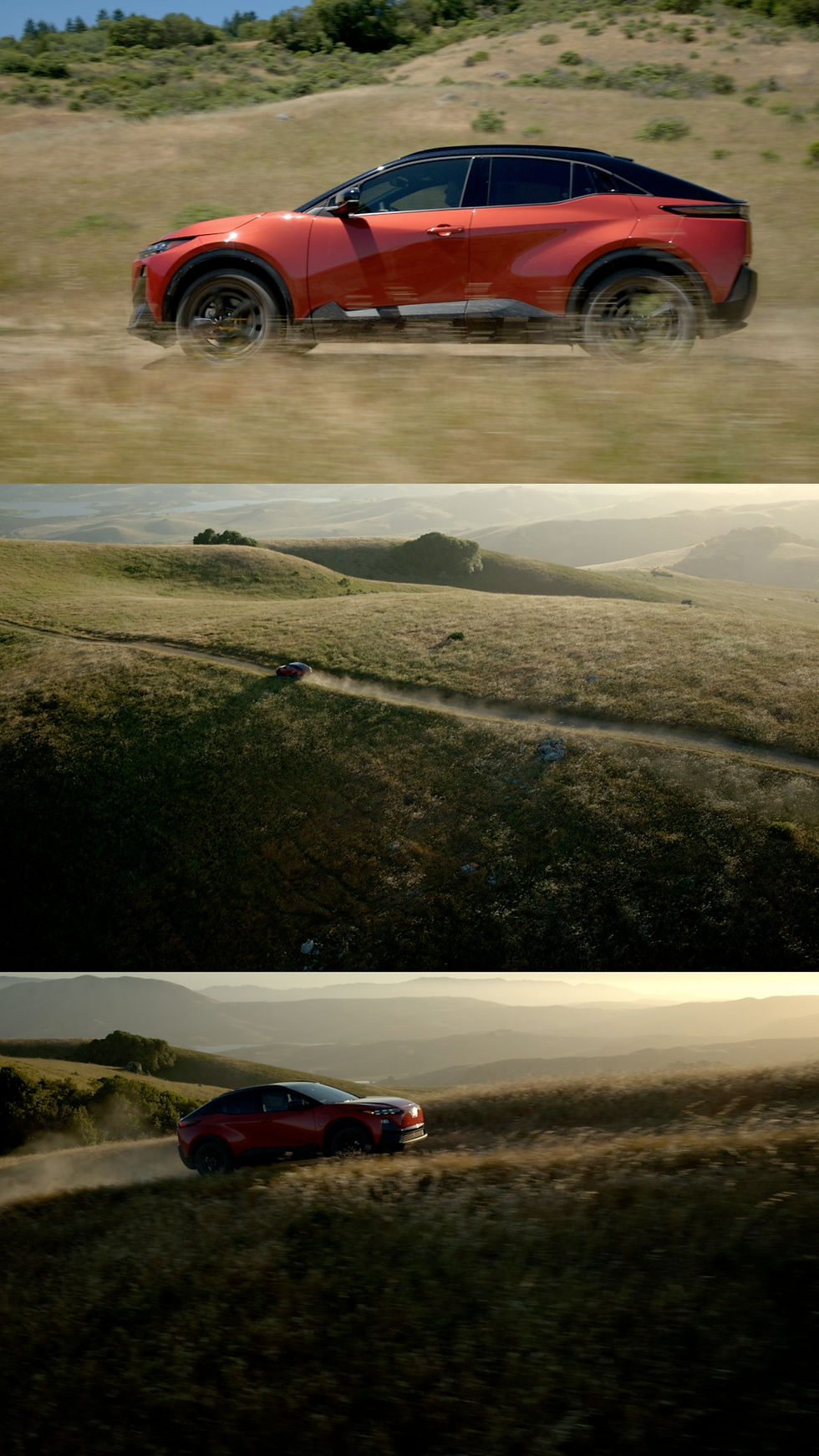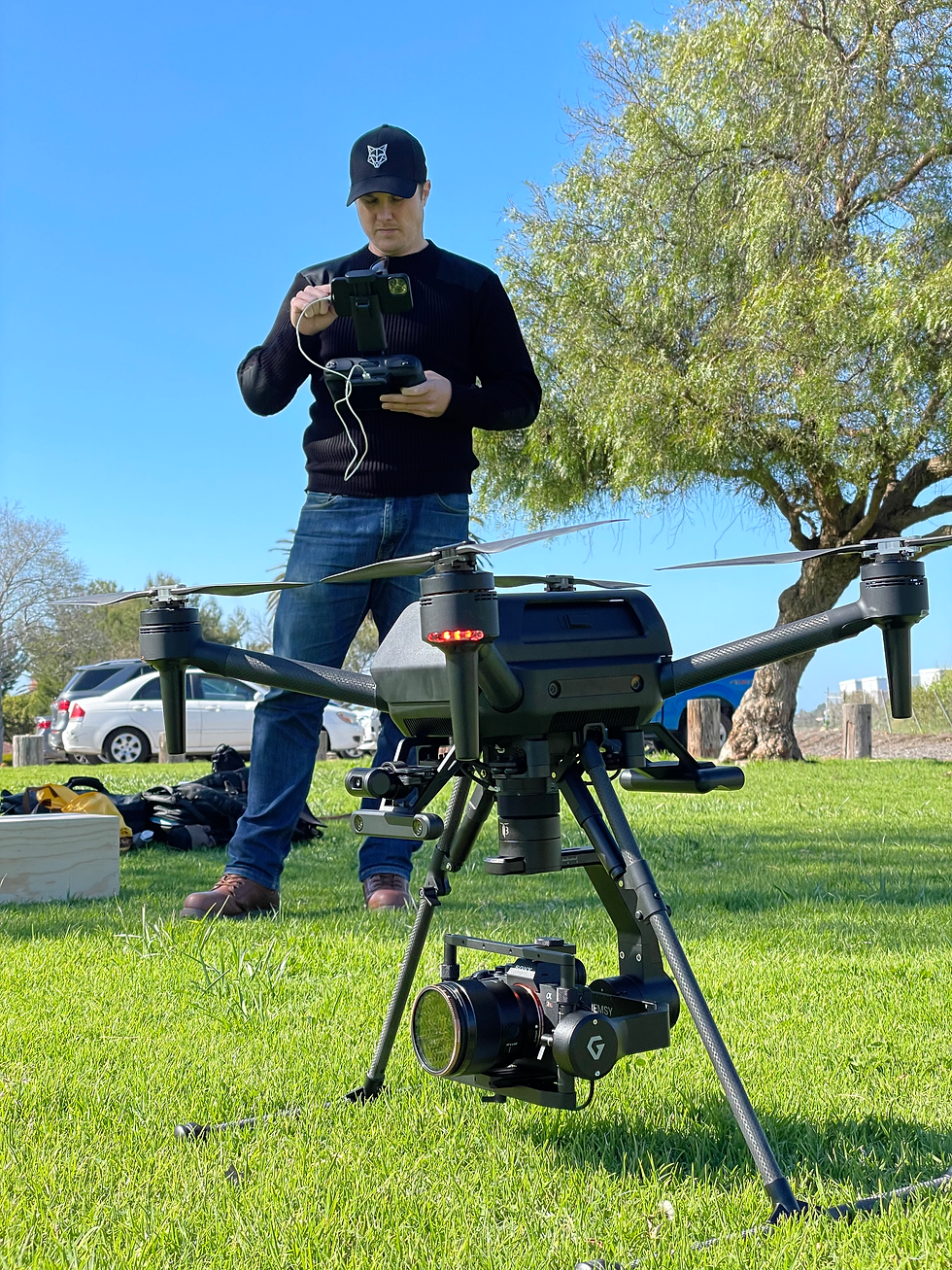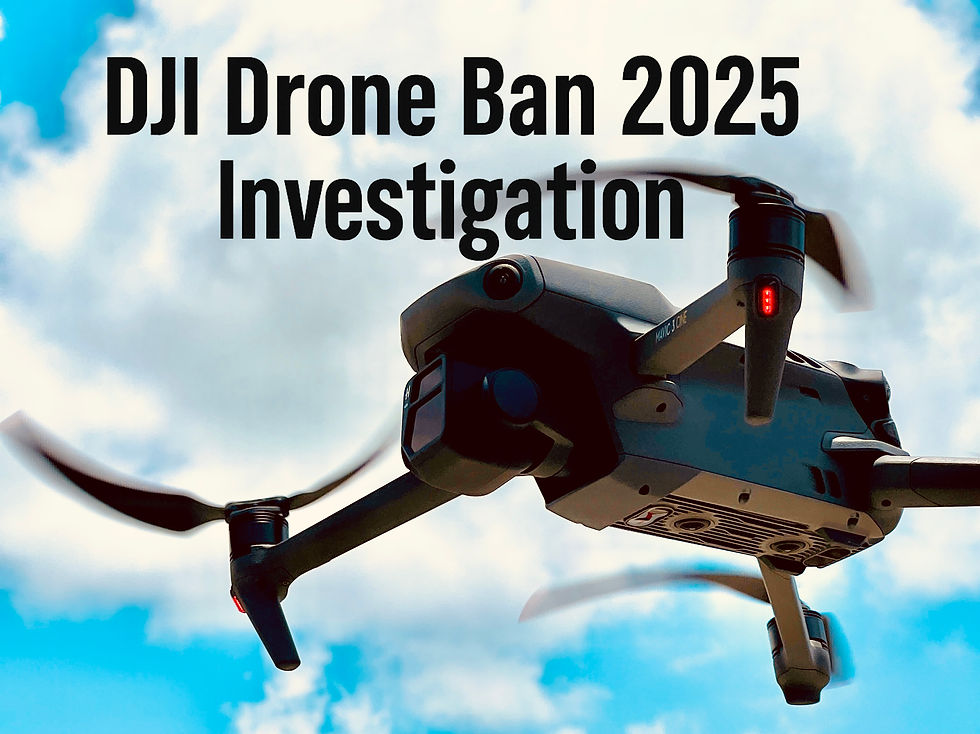- AIRWOLF

- Jul 22
- 4 min read
Updated: Aug 9

Earlier this year, we teamed up to help capture a bold new chapter in Subaru’s legacy: the 2026 Subaru Uncharted EV, their first all-electric SUV built to roam far beyond the pavement. With cameras rolling and props spinning, we took flight across Northern California’s redwood forest, filming in one of the most cinematic and wild locations we’ve worked in to date.
This wasn’t just another car shoot, it was a true off-the-grid adventure that brought Subaru’s “electric. unplugged.” ethos to life.

Filming the 2026 Subaru Uncharted EV in Northern California
The terrain was no joke. We filmed throughout Santa Rosa and the surrounding redwood forest, where the landscape demanded as much from our gear as it did from the vehicle. Twisting dirt trails, misty switchbacks, river rock beds, and sheer drop-offs, all became part of the narrative.
The 2026 Subaru Uncharted EV didn’t just keep up, it owned the terrain. Whether we were flying low through moss-draped tree corridors or soaring up for wide reveals, the vehicle remained the visual anchor: a clean, quiet force carving through untamed land.
How the 2026 Subaru Uncharted EV Handled the Redwood Terrain
Subaru’s new electric SUV is no suburban commuter. With dual-motor AWD, aggressive off-road geometry, and intuitive drive modes, the Uncharted EV performed more like a trailblazer than a prototype.
Its design is clean but rugged, with sharp lines and practical detailing that still feels unmistakably Subaru. Inside, it’s packed with intuitive tech and sustainable materials, but what stood out to us was how gracefully it moved through the wild. You could feel it was purpose-built for the path ahead, gliding over wet logs and gravel grades with total control.
This wasn't a stylized test track. It was real-world terrain, and the EV handled it like it had been there before.
A Director with Vision: Bringing Adventure to the Frame
This campaign was led by director Anthony Dias, whose work thrives in grounded, cinematic environments. His vision was to tell a story that felt both personal and epic, where the car didn’t just appear, it journeyed.
Working with Anthony always feels like shooting a film, not a commercial. Every shot was intentional. Every movement had a rhythm. Whether it was a wide drone push through the morning fog or a tight tracking shot along the edge of a ravine, the creative was about motion, emotion, and immersion.
Our aerial team collaborated closely with him to ensure the drone work enhanced, not interrupted, the flow of the visual story.

Aerial Gear and Techniques for the 2026 Subaru Uncharted EV Shoot
We brought out the DJI Inspire 3 paired with the X9 8K full-frame camera. With a dual-operator setup, we had the control and precision to match the Uncharted EV’s movements in real time, even through complex trail systems and low-clearance tree lines.
Some shots required threading the drone through tight spaces in the redwoods; others were wide, cinematic pullbacks that revealed the EV alone in vast, wild terrain. Having flown for Subaru before, we knew they’d want scale, motion, and raw beauty, and the Inspire 3 delivered in all conditions.
From pre-dawn to golden hour, we flew in fog, dust, and dense canopy light. It was the kind of environment that forces you to level up with every shot. And we loved it.

Working with Precision Driver Tony Hunt
One of the absolute highlights of this shoot was working with Tony Hunt — not just an insanely skilled precision/stunt driver, but truly one of the best guys to have on set. From the minute he pulled up, you could feel the calm confidence of someone who’s been behind the wheel on everything from Ford v Ferrari to Fast & Furious. But even more than his credits, it was the way he worked with us that stood out.
As drone operators, timing and rhythm are everything. Tony understood that instantly. There were moments when most drivers would have charged ahead, but Tony instinctively held pace — letting the Inspire 3 get into perfect position before powering through a turn or kicking up dust on cue. His awareness of both the car and the camera was next-level.
That kind of collaboration is rare. Tony didn’t just show up to drive, he showed up to help us make something cinematic. And he nailed it.

Telling Subaru’s Next Chapter From the Sky
The 2026 Subaru Uncharted EV is more than a new vehicle. It’s Subaru doubling down on its roots, freedom, function, and a deep respect for the outdoors, while stepping into the future with all-electric power. It’s a call to explore the wild on new terms, without sacrificing capability or soul.
As drone operators and aerial storytellers, our role was to show how far you can go when nothing holds you back, not terrain, not noise, and not a gas tank.
And in the end, that’s what this campaign was really about: uncharted freedom, seen from above.
Support Our Work
If you enjoy the content we share and want to support what we do, you can browse gear we personally use and recommend here: Shop Drone + Camera Tools on Amazon Purchases made through this link help keep us flying — at no extra cost to you.
Work With Us
Whether you're producing a commercial, series, or branded shoot, we bring industry-level drone cinematography to every set.
Contact Us – Start a conversation about your next project
Drone Services – See what we offer
Aircraft We Fly – Meet the tools we bring to set
Our Work – Explore past projects
Flight Log Blog – More behind-the-scenes stories and gear insights































